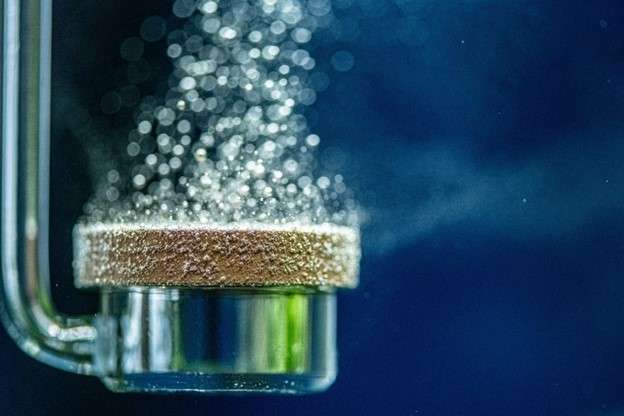Suppose you’re a proud aquarium owner or a budding enthusiast. In that case, you know how important it is to create a healthy environment for your aquatic buddies. One key player in this underwater symphony is the trusty aquarium air pump. But have you ever wondered how long these little machines can keep the bubbles flowing? In this guide, we’ll dive into the lifespan of aquarium air pumps, factors that affect their durability, and how to know when it’s time for a replacement.
Types of Aquarium Air Pumps
Before we get into the nitty-gritty of lifespans, let’s start with the basics. There are a few different types of aquarium air pumps, and understanding them can shed light on their potential lifespan and we can answer the burning question of how long do aquarium air pumps last.
1. Diaphragm Air Pumps – These are the workhorses of the aquarium world. Diaphragm air pumps use rubber diaphragms to push air into your tank. They are known for their reliability and can last several years with proper care.
2. Piston Air Pumps – Piston pumps use a piston mechanism to generate air. They are generally more durable than diaphragm pumps and can last even longer.
3. Battery-Operated Air Pumps – Battery-powered pumps are great for emergencies or transport but tend to have a shorter lifespan due to battery wear and tear.
4. Linear Air Pumps – Linear pumps are known for their quiet operation and energy efficiency. They have a moderate lifespan and are a popular choice among hobbyists.
5. Regenerative Blowers – These heavy-duty pumps are built for industrial use and can last many years. They are less common in home aquariums.
The type of air pump you choose can significantly impact its lifespan. Diaphragm and piston pumps are the go-to choices for most aquarium owners due to their reliability.
Factors Affecting Lifespan
Now, let’s talk about what affects the lifespan of your aquarium air pump.
1. Usage – How often you run your air pump significantly affects how long it lasts. If you have it running 24/7, it might wear out faster than intermittent use.
2. Positioning – Where you place your air pump matters. It’s best to keep it in a dry, cool place away from water splashes. Humid or wet environments can accelerate wear and tear.
3. Brand Quality – Not all air pumps are created equal. Investing in a reputable brand with a history of producing reliable pumps can extend its lifespan. Do your research and read reviews before buying.
4. Maintenance – Regular maintenance can add years to your air pump’s life. We’ll delve into this more in the next section, but simple tasks like cleaning the air filter and checking for clogs can make a big difference.
5. Power Surges – Sudden power surges or fluctuations can harm your air pump’s internal components. Consider using surge protectors to safeguard your equipment.
Signs of Wear and Tear
Okay, how do you know when your trusty air pump shows signs of old age? Here are some common indicators:
1. Reduced Airflow – If you notice that the bubbles in your tank aren’t as lively as they used to be, it could be a sign that your pump is losing its oomph.
2. Increased Noise – Is your once-silent air pump suddenly making more noise than your aquarium filter? That’s a clear sign that something might be amiss inside.
3. Vibrations – Excessive vibrations or rattling can indicate internal damage or misalignment of components.
4. Inconsistent Bubbling – If your air pump starts producing irregular bubbles or fails to maintain a steady flow, it might be on its last legs.
5. Visible Damage – Cracks, frayed wires, or wear and tear on the pump’s exterior are apparent red flags.
Maintenance Tips
Now, let’s talk about how to keep your aquarium air pump in tip-top shape:
- Regular Cleaning – Clean the air filter and air stones regularly. Dust and debris can clog these components, reducing efficiency.
- Check for Clogs – Inspect the tubing and connections for clogs or blockages. Clear any obstructions to ensure a smooth airflow.
- Replace Worn Parts – If you notice damaged tubing or worn-out components, don’t hesitate to replace them. It’s a small investment to extend your pump’s life.
- Keep It Dry – Ensure your pump is dry and away from water. This prevents electrical issues and rust.
- Follow Manufacturer Recommendations – Read and follow the maintenance instructions provided by the manufacturer. They know their product best.
- Monitor for Noise and Performance – Pay attention to any unusual noises or changes in performance. Catching problems early can prevent further damage.
When to Replace Your Air Pump
So, when is it time to say goodbye to your old faithful air pump?
1. Frequent Breakdowns – If your pump keeps failing despite your best efforts at maintenance, it might be time to retire it.
2. Diminished Performance – When your pump no longer delivers the same bubbly performance as it did when new, it’s a sign it’s reaching the end of its life.
3. Safety Concerns – Take your time if you notice exposed wires or other safety hazards. Replace the pump immediately.
4. Outdated Technology – Newer models may offer better performance and energy efficiency as technology advances. Consider an upgrade if your pump needs to be updated.
Conclusion
The lifespan of an aquarium air pump depends on various factors, including its type, usage, and maintenance. These little machines can serve you faithfully for several years with proper care. Regular maintenance and vigilance for signs of wear and tear can help you get the most out of your air pump. And when the time comes to replace it, remember that a healthy aquarium is a happy aquarium.

